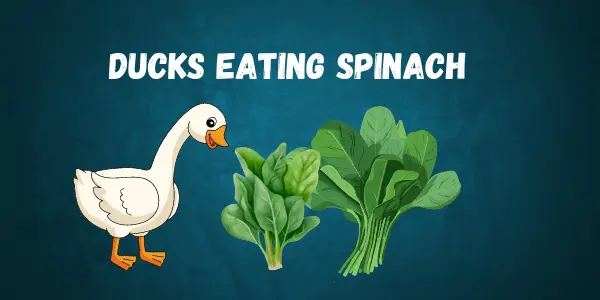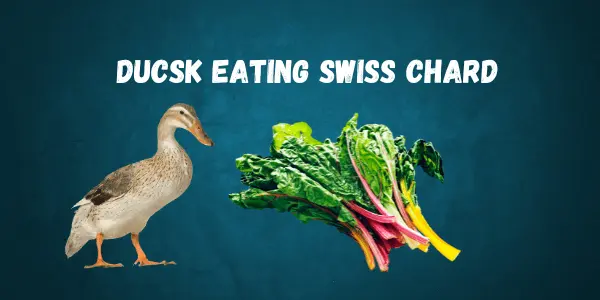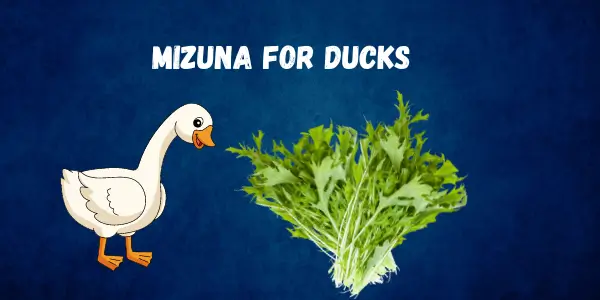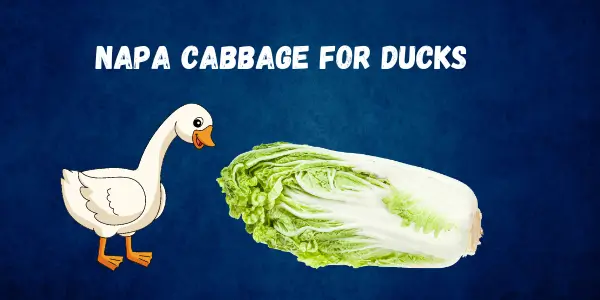Can Ducks Eat Kale? A Complete Feeding Guide
Published: 7 Sep 2024
Ducks can eat kale safely as part of their diet. This nutritious vegetable provides essential nutrients that support duck health when fed in moderation. Kale serves as a good supplement to their regular feed, offering variety and nutritional benefits to domestic and pet ducks.
Is Kale Safe for Ducks?
Kale is safe for ducks to consume. Ducks digest this leafy green without issues when prepared properly. Feed kale in small pieces to prevent choking hazards, especially for smaller ducks. Raw kale works best for ducks, as their digestive systems process uncooked vegetables more efficiently.
According to duck nutrition studies, leafy greens should make up about 10-15% of a duck’s diet. Too much kale may cause digestive upset due to its fiber content. Monitor your ducks after introducing kale to ensure they tolerate it well.

Avoid feeding kale with pesticides or chemicals. Wash all kale thoroughly before offering it to your ducks. This removes potential contaminants that could harm their health.
Nutritional Benefits of Kale for Ducks
Kale contains nutrients that complement a duck’s diet. This vegetable adds variety to their food intake while supporting bodily functions. Duck owners report improved feather quality when kale is included in their birds’ diet.
Research from poultry nutrition experts indicates that greens like kale help maintain healthy digestion in waterfowl. The fiber in kale supports gut function, while the water content aids hydration. These benefits make kale a practical addition to duck feed.
Calcium and Vitamin Content in Kale
Kale provides calcium that ducks need for egg production and bone health. Female ducks particularly benefit from calcium-rich foods during laying periods. One cup of raw kale contains approximately 90mg of calcium, contributing to a duck’s daily requirements.
Kale contains vitamin A, supporting eye health and immune function in ducks. Vitamin K in kale aids blood clotting and bone metabolism. Vitamin C content helps reduce stress and supports overall health in waterfowl.
Ducks convert these nutrients efficiently when kale is cut into small pieces. This increases the surface area for digestion and nutrient absorption. The compact size also prevents selective feeding behaviors.
Minerals in Kale That Support Duck Health
Kale contains iron that helps transport oxygen throughout a duck’s body. This supports energy production and activity levels. Domestic ducks need adequate iron for proper growth and development.
Potassium in kale aids in muscle function and nerve signaling for ducks. This mineral helps maintain proper fluid balance within their bodies. Duck farmers note that adequate potassium supports normal activity levels in their flocks.
Magnesium from kale contributes to enzyme function in ducks. This mineral works with calcium to support bone development. Young ducks particularly benefit from these minerals during growth phases.
Feeding kale to ducks provides these minerals in a natural form. This complements commercial duck feed that may lack certain trace minerals. The combination supports comprehensive nutrition for healthier birds.
Can Ducklings Eat Kale?
Ducklings can eat kale in limited amounts after they reach 2-3 weeks of age. Young ducklings need starter feed as their primary nutrition source. This ensures proper growth and development during their critical early stages.
For ducklings, kale must be finely chopped into tiny pieces. Their small bills and developing digestive systems cannot handle larger pieces. Introduce kale gradually, starting with very small amounts mixed with their regular feed.
Duck breeders report that ducklings under 3 weeks old should focus on protein-rich starter feed. Kale should compose no more than 5% of their diet at this stage. This percentage can increase slightly as they mature.
Monitor ducklings closely when introducing kale. Watch for signs of digestive upset like loose droppings. If such symptoms appear, reduce or temporarily eliminate kale from their diet.
Different Types of Kale for Ducks:
| Different Types of Kale for Ducks: |
|---|
|
Ducks can consume various types of kale with different nutritional profiles. Each variety offers specific benefits for duck health. The texture and flavor differences may affect how readily ducks accept them. Duck keepers note that some ducks show preferences for certain kale varieties. This varies by individual bird and flock. Offering different types provides nutritional variety and prevents boredom in their diet. Can Ducks Eat Curly Kale?Ducks can eat curly kale safely. This common kale variety contains high levels of vitamins A and K. The curly texture makes it easier for ducks to grab and tear into manageable pieces. Curly kale has a milder flavor compared to other varieties. This often makes it more appealing to ducks trying leafy greens for the first time. Its ruffled leaves hold water well, providing additional hydration. Duck owners report that curly kale is well-received by most ducks. The texture helps clean their bills naturally during feeding. This variety works well chopped or served in small leaf sections. Can Ducks Eat Ornamental Kale?Ducks can eat ornamental kale that hasn’t been treated with chemicals. This decorative variety contains similar nutrients to regular kale. The colorful leaves provide visual enrichment alongside nutritional benefits. Ornamental kale tends to have thicker leaves than other varieties. This requires more thorough chopping before feeding to ducks. The thicker texture may make it less immediately appealing to some ducks. Research shows ornamental kale contains comparable nutritional value to other kale types. The vibrant colors indicate presence of different antioxidants. These compounds support duck immune function and overall health. Can Ducks Eat Kale Stems?Ducks can eat kale stems in moderation. The stems contain fiber and nutrients but are tougher than leaves. Always chop stems into small pieces under 1/2 inch to prevent choking hazards. Duck digestive systems can process kale stems, but they take longer to break down. The fiber content in stems aids digestion when fed in appropriate amounts. Excess stem material may cause crop impaction in some cases. Poultry nutritionists recommend a ratio of more leaves to stems when feeding kale to ducks. This balance provides optimal nutrition without digestive strain. Young stems are more tender and easier for ducks to process than mature, woody stems. Can Ducks Eat Raw Kale?Ducks can eat raw kale, which is preferable to cooked versions. Raw kale retains more nutrients that benefit duck health. The natural texture also supports normal feeding behaviors. Raw kale maintains its water content, adding hydration to the duck’s diet. Studies show that water in vegetables contributes to overall fluid intake. This becomes particularly important during warmer months. Poultry experts note that raw kale fiber helps maintain proper gut function in ducks. The intact cell structures provide a natural form of prebiotics. This supports beneficial gut bacteria that aid in nutrient absorption. |
How to Prepare Kale for Ducks
Preparing kale properly ensures ducks get maximum nutritional benefits while minimizing risks. Wash kale thoroughly under cold water to remove dirt, pesticides, and contaminants. This cleaning step protects duck health and prevents exposure to harmful chemicals.
Remove any wilted or discolored portions before serving. Fresh kale provides more nutrients and reduces risk of mold exposure. Research indicates that fresh vegetables maintain higher vitamin content than those past their prime.
Tear off leaves from the thick central stem if feeding to smaller ducks. This makes the kale more manageable for consumption. The process takes minimal time but significantly improves feeding efficiency.
Proper Serving Sizes for Ducks
Adult ducks should receive approximately 1-2 tablespoons of chopped kale per bird daily. This amount provides benefits without displacing essential components of their main diet. Duck nutrition studies show that treats should not exceed 10% of total daily food intake.
For a flock of five ducks, offer about 1/4 cup of chopped kale total. Monitor consumption to ensure all ducks get access to the greens. Dominant ducks may consume more than their fair share if quantities are limited.
Adjust serving size based on duck age and size. Larger breeds like Pekins may handle slightly more kale than smaller varieties like Calls. Observe how your ducks respond to determine optimal amounts for your specific birds.
Cutting Kale Into Small Pieces
Cut kale into pieces no larger than 1/2 inch across for adult ducks. This size prevents choking and allows for easier consumption. Smaller pieces also increase surface area for digestive enzymes to work efficiently.
For ducklings and bantam breeds, cut kale into 1/4 inch pieces or smaller. The tiny pieces accommodate their smaller bills and throats. Duck keepers report fewer feeding difficulties when greens are appropriately sized.
Use a sharp knife on a cutting board for efficient preparation. Some duck owners use kitchen scissors or herb choppers for quicker processing. The tool matters less than achieving consistently small pieces.
How Often Can Ducks Eat Kale?
| How Often Can Ducks Eat Kale? |
|---|
|
Ducks can eat kale 2-3 times per week safely. This frequency provides nutritional benefits without overloading their systems. Duck digestive tracts process varied foods better when given time between similar items. Research from poultry nutritionists suggests rotating greens rather than offering the same type daily. This practice prevents potential mineral imbalances from consistent intake of one vegetable. It also maintains food interest among the flock. Balanced Diet for Domestic DucksDomestic ducks require a diet consisting primarily of commercial waterfowl feed (80-85%). This formulated feed provides balanced nutrition specific to duck needs. Duck feed contains 16-18% protein for adults and 20-22% for growing ducklings. Grains like corn, oats, and wheat can comprise 5-10% of the diet. These provide energy and encourage natural foraging behaviors. Duck owners report increased activity levels when grains are scattered rather than bowl-fed. Vegetables including kale should make up 5-10% of the total diet. This proportion ensures ducks receive beneficial nutrients without diluting their protein intake. A University of Cornell study found that ducks maintaining this balance showed optimal health markers. Kale as Part of a Varied DietKale works best as one component in a rotation of leafy greens and vegetables. Variety prevents nutritional imbalances and maintains feeding interest. Duck behavior studies show increased engagement when diet includes diverse food items. Combine kale with other safe vegetables like peas, cucumber, and lettuce. This creates nutritional synergy as different plants provide complementary nutrients. The fiber content varies between vegetables, supporting diverse gut bacteria. Rotation schedules might include kale twice weekly alongside other vegetables on alternate days. This approach maintains novelty while ensuring consistent nutrition. Duck keepers find this method simplifies feeding routines while maximizing benefits. |
Potential Side Effects of Kale for Ducks:
| Potential Side Effects of Kale for Ducks |
|---|
|
Excessive kale consumption may cause loose droppings in ducks. The high fiber content can overwhelm their digestive systems if fed in large amounts. Poultry veterinarians recommend gradual introduction to prevent digestive upset. Kale contains small amounts of oxalates that can affect calcium absorption when fed excessively. This becomes relevant only with very high consumption levels. Moderate feeding prevents any significant impact on mineral metabolism. Research indicates that ducks rarely experience serious side effects from appropriate kale portions. Most issues arise from improper preparation or overfeeding. Following recommended serving sizes minimizes potential problems. Signs of Digestive Issues in DucksWatch for changes in dropping consistency when introducing kale. Normal duck droppings have firm segments with white urate caps. Loose, watery droppings may indicate digestive disturbance from diet changes. Decreased activity or appetite suggests digestive discomfort. Healthy ducks maintain consistent eating patterns and energy levels. Temporary changes often resolve within 24-48 hours if the triggering food is reduced. Excessive preening or feather pulling around the vent area may indicate discomfort. Ducks typically direct attention to areas experiencing irritation. This behavior should prompt evaluation of recent dietary changes. Consult a poultry veterinarian if symptoms persist beyond 2-3 days. Professional assessment prevents complications from underlying conditions. Most diet-related issues resolve quickly with appropriate adjustments. |
Other Leafy Greens for Ducks
Ducks benefit from various leafy greens in their diet. Rotate options like romaine lettuce, Swiss chard, and collard greens with kale. Duck nutrition improves with diverse plant nutrients from multiple sources.
Avoid iceberg lettuce due to its low nutrient content and high water percentage. This variety provides minimal nutritional benefit compared to darker greens. Studies show that darker leaf coloration generally indicates higher nutrient density.
Kale vs. Spinach for Duck Nutrition
Kale contains more calcium than spinach (90mg vs 30mg per cup). This difference matters for laying ducks requiring higher calcium levels. The calcium in kale supports eggshell formation and bone health.
Spinach contains higher levels of iron than kale (0.8mg vs 0.6mg per cup). This mineral supports oxygen transport in duck blood. However, spinach contains more oxalates that can bind calcium when fed frequently.
Research shows kale provides more vitamin C than spinach. This supports immune function during stress or seasonal changes. Both greens contain valuable antioxidants that protect cellular health in ducks.
FAQs Ducks Having Kale
Wild ducks can eat kale when offered by humans, though it’s not part of their natural diet. Wild ducks typically forage for aquatic plants, insects, and seeds in their natural habitat. The digestive systems of wild and domestic ducks function similarly, allowing them to process kale safely.
Conservation groups discourage feeding wild ducks human foods regularly. This practice can disrupt natural foraging behaviors and create dependency. Occasional small amounts of kale cause no harm if encountered, but shouldn’t become a primary food source.
Ducks can eat both kale and spinach as part of their vegetable rotation. These leafy greens provide complementary nutrients when fed in moderation. Duck owners often alternate between these options to provide variety.
Spinach contains higher levels of oxalates than kale. This compound can affect calcium absorption when fed excessively. For this reason, duck experts recommend feeding spinach less frequently than kale, especially to laying females.
Chickens and ducks can both eat kale safely. The nutritional benefits apply to both poultry types despite their different digestive systems. Backyard flock owners often grow kale as a supplemental feed for mixed poultry flocks.
Ducks generally consume larger pieces than chickens due to their bill structure. When feeding mixed flocks, ensure pieces are small enough for chickens but plentiful enough for ducks. This prevents competition and ensures all birds receive adequate nutrition.
Ducks and geese can eat kale as part of their green vegetable intake. Both waterfowl species process leafy greens efficiently and benefit from the nutrients. Kale serves as a practical supplement for mixed waterfowl flocks.
Geese consume larger quantities of vegetation than ducks due to their size. When feeding mixed flocks, adjust portions accordingly, with geese receiving approximately twice the amount. This ensures nutritional needs are met for both species.
Conclusion: Kale as a Nutritious Addition to Duck Diet
Kale serves as a nutritious addition to duck diets when fed properly. This leafy green provides vitamins, minerals, and fiber that support duck health. The nutrients in kale complement commercial feed components while adding variety.
Proper preparation ensures ducks receive maximum benefits with minimal risks. Washing thoroughly, chopping finely, and serving appropriate portions prevents potential issues. These simple steps take minimal time but significantly impact nutritional value.

- Be Respectful
- Stay Relevant
- Stay Positive
- True Feedback
- Encourage Discussion
- Avoid Spamming
- No Fake News
- Don't Copy-Paste
- No Personal Attacks

- Be Respectful
- Stay Relevant
- Stay Positive
- True Feedback
- Encourage Discussion
- Avoid Spamming
- No Fake News
- Don't Copy-Paste
- No Personal Attacks





